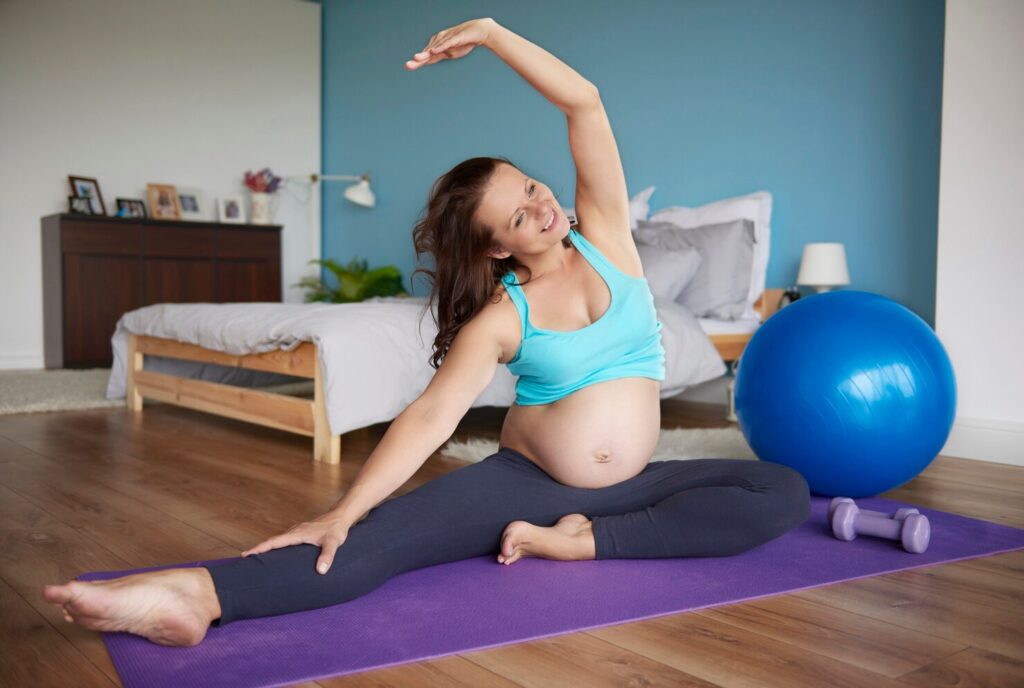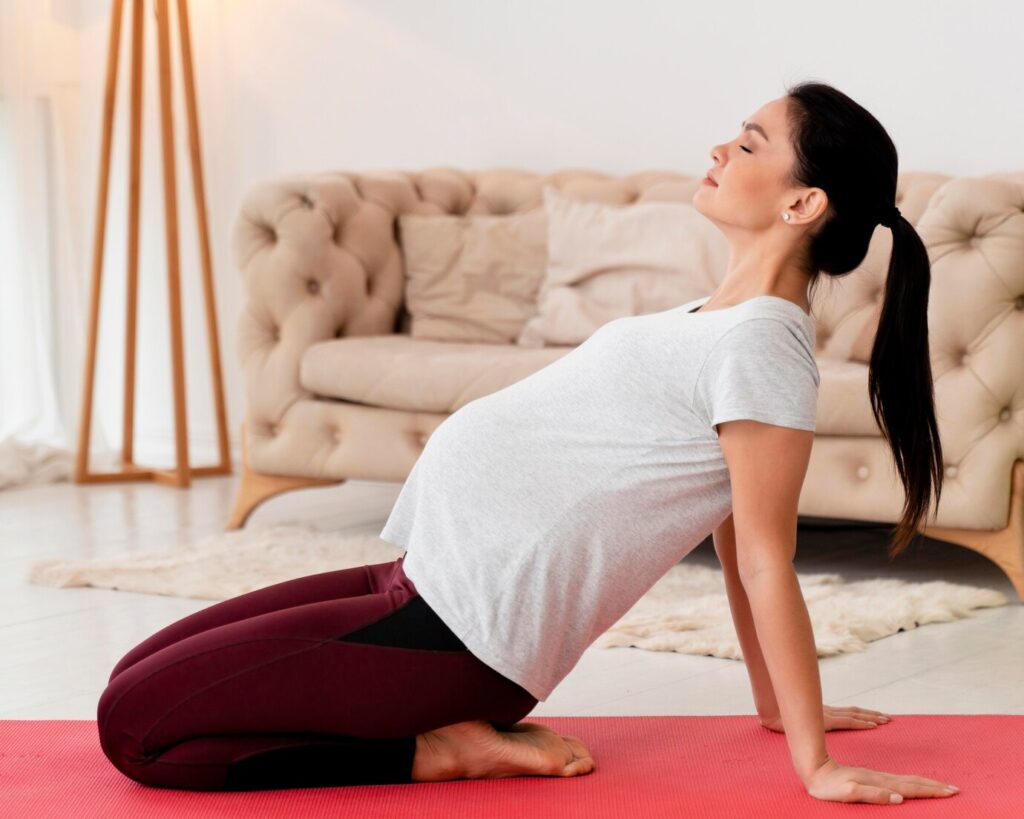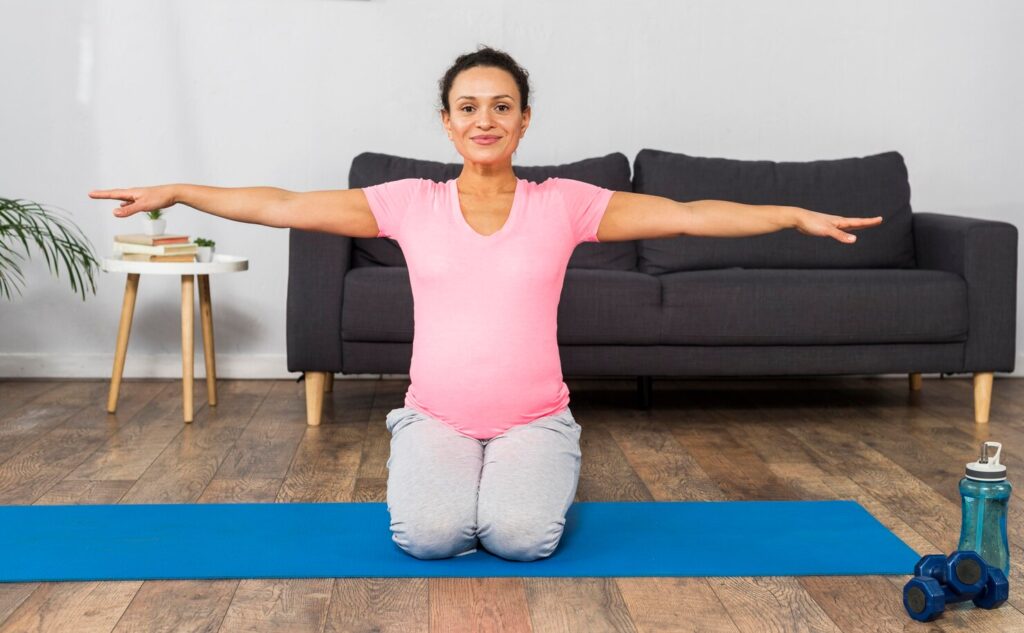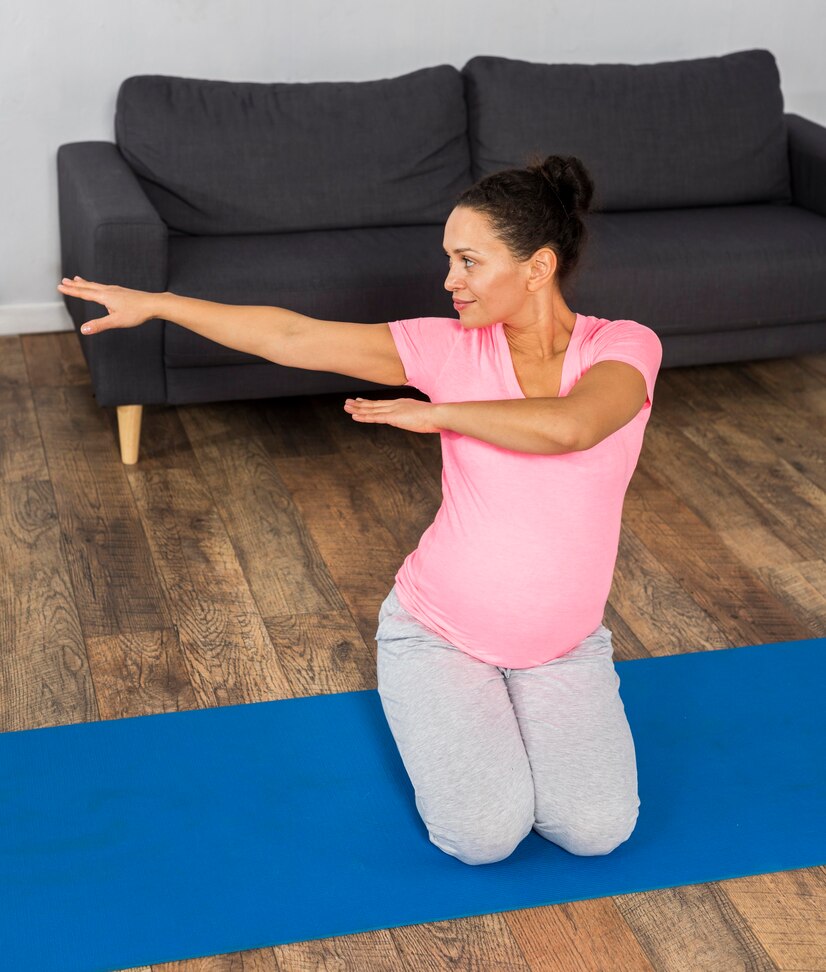One of the basic seated poses in yoga is Dandasana, or Staff Pose. It may seem very simple – just sit with your legs extended forward. But do not forget about important nuances when performing this asana. Knees should be pressed to the floor, toes pointed towards the body, heels together, back straight, glutes slightly engaged, and the spine and head aligned. At this moment, your back is like an anchor, securely holding your body perpendicular to the floor.
From Dandasana, many other yoga poses and exercises can be performed, including dynamic ones. Let’s consider some of them.

Exercises from Dandasana with Bends
During these asanas, the legs remain straight, and the back also stays straight. The key element responsible for performing such asanas is the hip joints. However, this does not mean that only they are engaged. Asanas with bends affect the spine, internal organs, including almost the pelvic organs, and also stimulate digestion.
The most well-known bending asanas that can be performed from Dandasana are Paschimottanasana (forward bend from Staff Pose) and Janu Sirsasana (head-to-knee pose). During pregnancy, they might be difficult to perform, so it’s better to use a strap to avoid deep bends.

Exercises from Dandasana with Crossed Legs
The yoga pose known to everyone as the Lotus pose is Padmasana. Padmasana can also be performed from Dandasana. In this pose, circulation in the groin area is stimulated, the risk of varicose veins is reduced, and the back is strengthened. By the way, special attention should be paid to the back when performing these asanas: the back should be straight, the crown of the head pulled up, and the shoulders down. The same should be done in other cross-legged poses:
- Sukhasana, or the easy pose;
- Bhadrasana, or the auspicious pose;
- Baddha Konasana, or the butterfly pose.

Exercises performed kneeling
A fairly simple pose that can be easily adapted for pregnant women is the Diamond Pose, or Vajrasana. You need to sit on your knees and spread your feet so that you can sit between them on the floor, placing your hands in “namaste.” After the fourth month of pregnancy, for abdominal comfort, these poses can be done with knees apart. This asana stimulates digestion well and is recommended for those experiencing high acidity.

Exercises done in a squatting position
To strengthen the pelvic floor muscles and develop ligament mobility, yoga poses performed squatting are suitable. For example, Malasana: bring your hands together in “namaste,” place your feet slightly wider than shoulder-width apart, shift your body weight onto your heels, and gently squat down, lightly pushing your knees apart with your elbows. Malasana should not be practiced if there is a risk of miscarriage, but during labor contractions, it is an ideal position.
Exercises from Dandasana with twists
From Dandasana, you can transition into twist poses like Marichyasana and Bharadvajrasana.
To perform Marichyasana, bend your right knee, bringing the heel towards the groin area. Bring your left arm behind your back, place your right hand on the inside of your right thigh, gently pushing the knee outward. Look over your left shoulder. Hold the pose for a few seconds, then repeat the twist to the right.
Bharadvajrasana is usually performed from Dandasana, but during pregnancy, it’s better to use a chair. Sit on the chair with the backrest closer to your left side, then elongate your spine upwards, relax the abdomen, and slowly twist your torso to the left. (the abdomen must remain relaxed) Hold the pose for a few seconds, then repeat the twist to the right.
Twist poses help strengthen the uterine muscles, activate the intestines, and also relieve lower back pain.

With regular practice of these yoga poses, the functioning of the abdominal organs improves, the back, hamstrings, calves, and popliteal muscles are strengthened, and the pelvic organs are worked out. You can see the correct technique in our video lessons on the website.


Download the app and get 7 days free use
 eng
eng rus
rus deu
deu spa
spa fra
fra ita
ita por
por srp
srp tur
tur ukr
ukr por
por bos
bos



